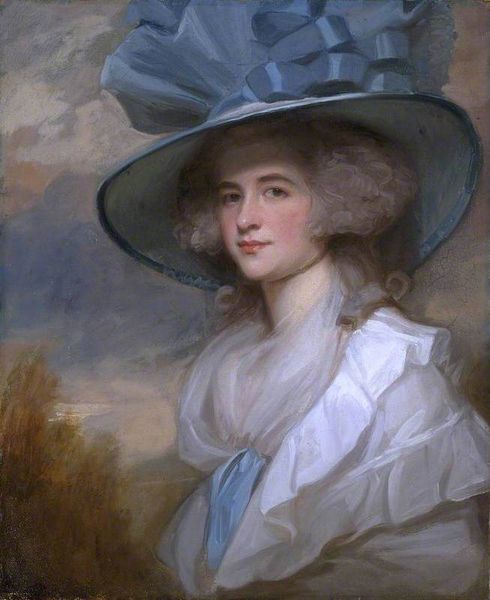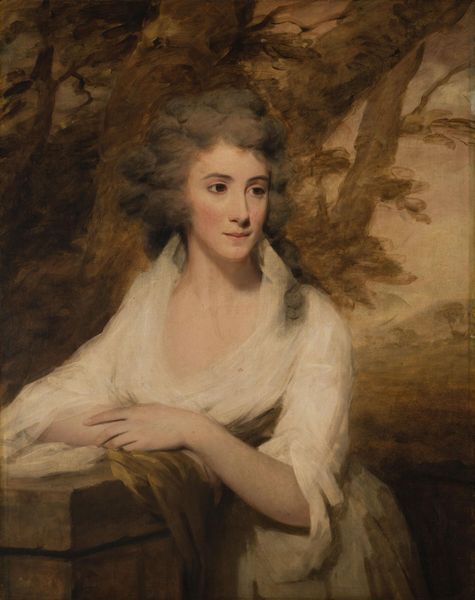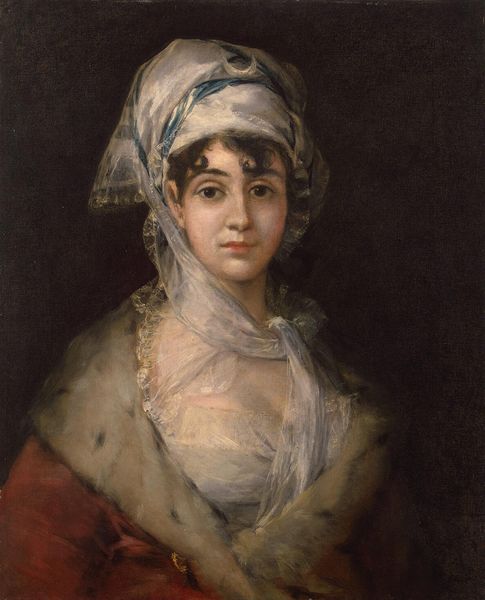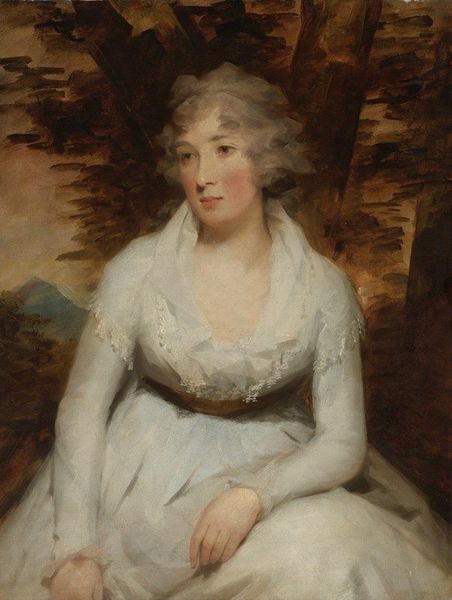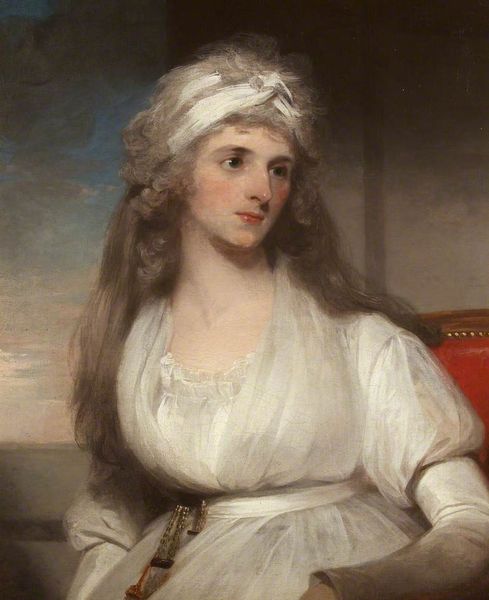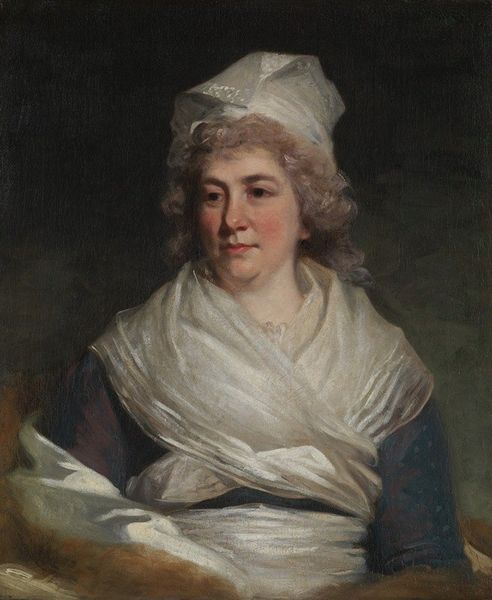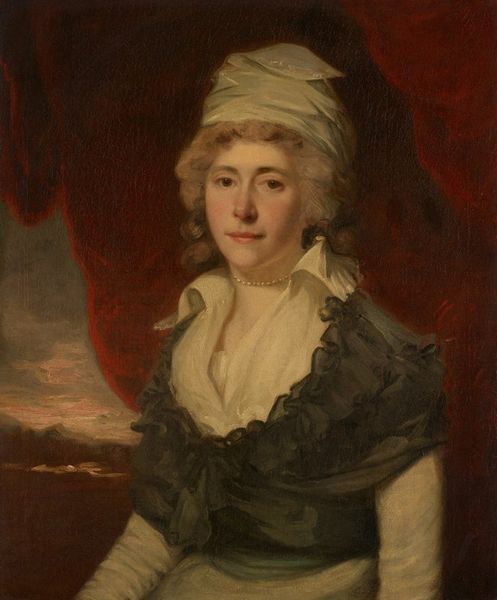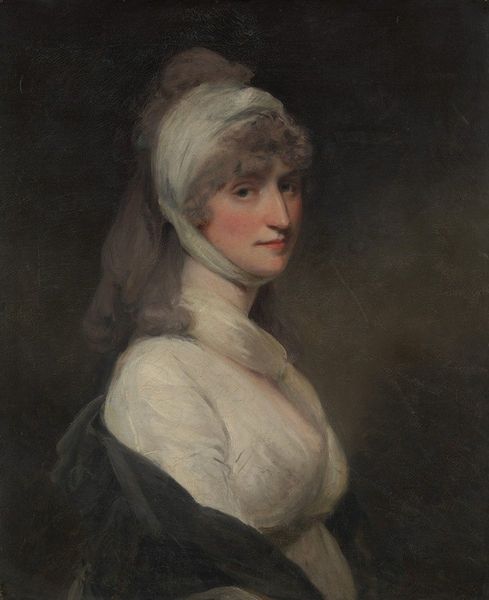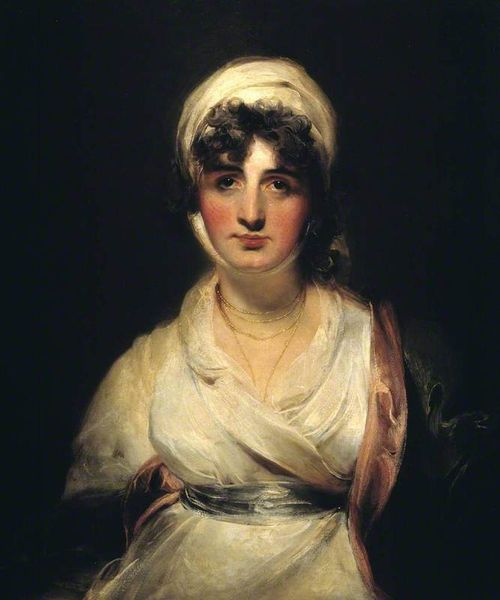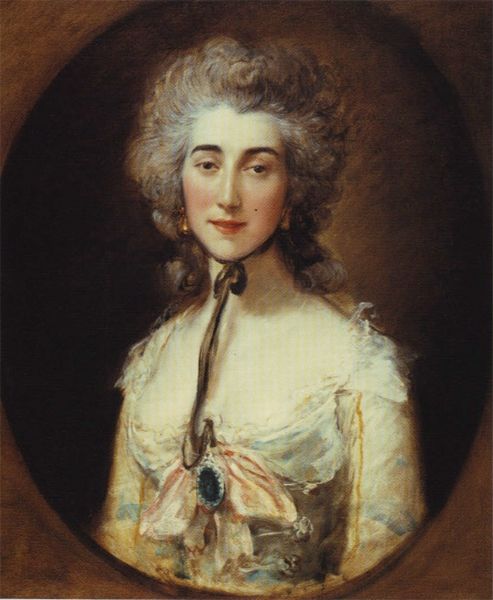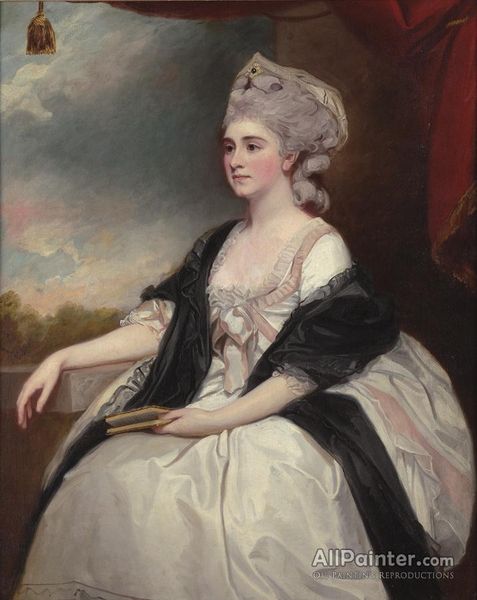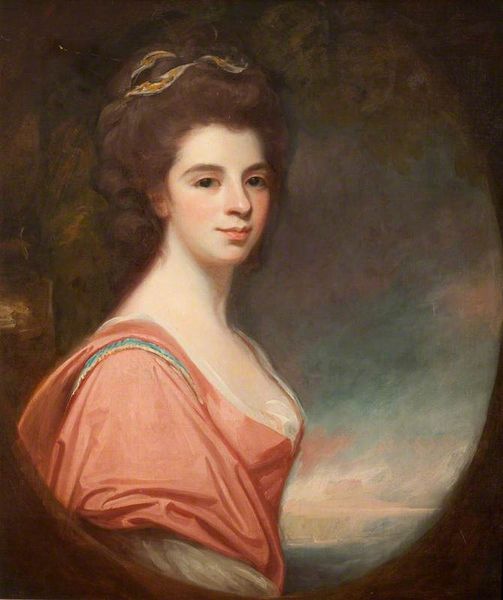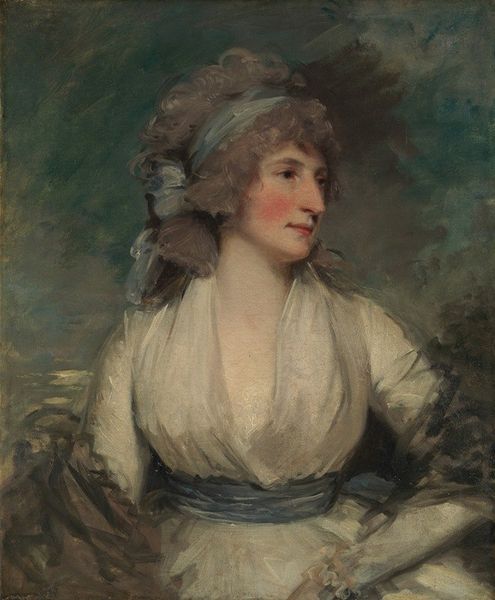
Copyright: Public domain
Curator: Gilbert Stuart’s portrait of Sarah Siddons, painted in 1787, presents us with an intriguing depiction of the renowned actress. Editor: My immediate impression is the striking coolness of the palette – those almost ethereal grays and blues. It projects a serene but powerful presence. What was the cultural significance of commissioning a portrait like this at that time? Curator: For a celebrated performer like Siddons, a portrait solidified her status within elite circles. Public image was meticulously crafted and disseminated through prints. Stuart, ambitious as ever, leverages her fame for his own rise. It’s fascinating how celebrity and artistic careers become interwoven. Editor: I’m struck by the materials and processes, especially the brushwork in the turban. There's a looseness that contrasts with the tighter handling of the face. Did Stuart's technique influence the reception of his subjects? Curator: Absolutely. Stuart sought a balance between accurate likeness and idealization, fitting in with the expectations of the elite. Consider the social position she holds: she wears a fashionable turban to communicate her worldly stature, and is immortalized on canvas. Editor: The turbans were high-fashion back then. Is the seemingly unfinished state of the backdrop intentional or incidental? It really makes you wonder what's going on behind her. It sort of makes the viewer feel like they can create their own imagined realities for Siddons in their mind. Curator: Good eye. The ambiguous background was likely practical, intended to shift focus entirely on the subject. It also suggests the blurring boundaries between stage persona and her private life, the tools of an artist hinting her active hand. This very ambiguity would make it accessible for various interpretations across socio-economic groups as it gets distributed. Editor: So the power and ambiguity both play significant roles? It shows how an artist has more freedom by using "loose" strokes, especially since painting styles back then were very uptight and technical, compared to our loose techniques nowadays. Curator: Exactly! Power resided not only in the subject, but in the artist's choices, including deliberate techniques and an acute understanding of how art would circulate. Editor: Fascinating how examining artistic processes opens these dialogues with both the sitter and the wider context, even now centuries later. Curator: Indeed. Reflecting on the painting through social history only enriches the understanding of Stuart’s decisions and their impact on how we continue to see Sarah Siddons.
Comments
No comments
Be the first to comment and join the conversation on the ultimate creative platform.
